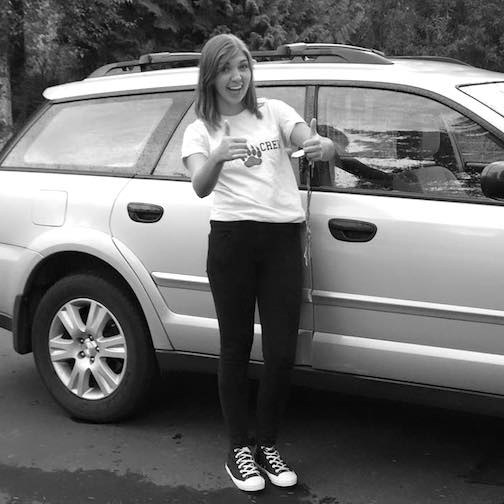The Driving Diabetic
Who is more dangerous: a drunk driver or a driver suffering from low blood sugar? It’s a trick question. Driving with a low is the equivalent to driving drunk.
As a teenager, we have a lot going on. Between school, extra-curricular activities and social activities, it’s amazing any of us get any sleep. As we all know, people with type 1 have an extra burden on top of this already heavy load.
However, one perk of being a teenager is the ability to drive. (Now—if you are a parent reading this, bear with me! I promise we all do our best to be safe and responsible drivers. And an added benefit for you is that you don’t have to drive us to all of our sports practices, rehearsals and study groups!)
Driving is a great opportunity and makes planning a lot easier, but as teenagers with type 1, we have to be extraordinarily careful. When I first started to drive and talk to other people about their habits with driving and type 1, it seemed tedious and nearly impossible, but I am here to assure you that that is not the case.
Before I drive, whether it’s a one-hour drive to the city or ten minutes down the road, I always check my blood sugar and double check that I have supplies in my car. This helps me catch any bad lows or highs before they happen, and it even allows me to prevent any issues that might happen later.
 Check your blood sugar levels BEFORE driving
Check your blood sugar levels BEFORE driving
If your blood sugar level is too high or low to drive it is essential that you WAIT until your sugars are in control, or have someone else drive. If you have to wait to drive—make sure that you communicate the situation with others.
Communicate your plan
It is especially important for you to inform your parents or guardians if they are expecting you home at a certain time or if you have somewhere to be and don’t want them to think you missed it due to carelessness. Send them a quick text or call to explain what is happening and what your game-plan is. When you first start driving, have a conversation with your family about what you need to do if you go low and what the expectations are.
Pull over for lows
As hard as you may work to avoid it, there will most likely be those inevitable times where you do get a low blood sugar while driving (type 1 is never convenient). However, the same rules apply. If you even start to think you may be dropping, safely pull over, check your blood sugar and treat as needed. I have found my continuous glucose monitor (CGM) to be especially useful while driving; I can keep a close eye on my trends and can eat before I drop or take additional insulin if necessary.
Have a low supply
I always make sure to have a bag of extra supplies in my car. I put together a small “grab-bag” that hangs out in my sunglasses compartment that contains extra syringes, pump sites, reservoirs, test trips, glucose and snacks. Although this might sound over the top, I assure you it is VERY simple and has saved me numerous trips home to grab extra supplies while I’m out and about. As a side note, do not keep insulin in your car for more than a couple of hours unless you are able to keep it in a small cooler. The heat fluctuations in your car may cause your insulin to go bad.
Driving with type 1 is quite easy and manageable when you have a plan of action in place. In addition to making sure your type 1 is under control, always remember to wear a seatbelt, not crank the music too loud, never text and drive —and always go the speed limit!


 Check your blood sugar levels BEFORE driving
Check your blood sugar levels BEFORE driving


